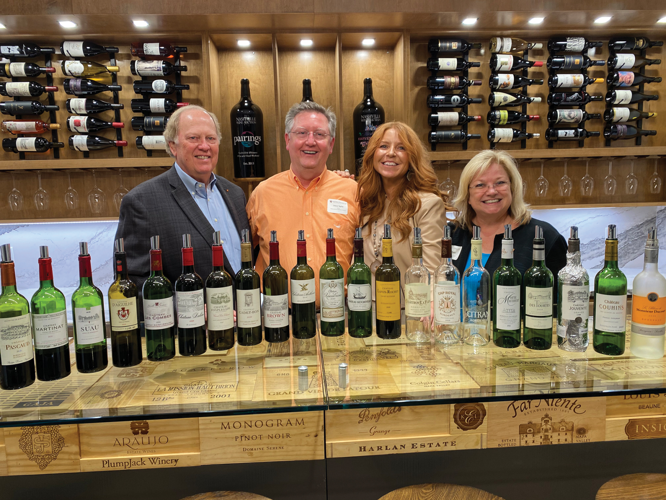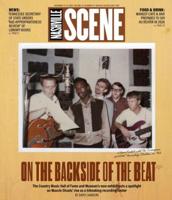
Of all the wines of the world, those from the Bordeaux region of France may evoke the most ardent interest. In particular, the red wines of Bordeaux elicit fascination because they have the ability to improve with age for as long as 50 years, making them investable assets. However, young Bordeaux wines need time to be palatable, exhibiting overpowering tannins until the years calm their palate-puckering characteristics.
This makes tasting the latest vintages a difficult but very important proposition. In the past, Bordeaux collectors leaned heavily on the ratings of wine experts like critic and author Robert Parker to give some indication of which vintages and specific wines might become something really special — something worthy of the expense and cellar space as they made purchases years or decades before these wines hit their peaks.
Parker’s influence has waned over the years as more collectors choose to make their own decisions. Participating in what are known as en primeur tastings of the latest vintages has become an important part of the decision-making process for wine buyers ranging from collectors and wholesale and retail buyers to sommeliers looking to craft wine lists for their restaurants. A group of these experts convened at the headquarters of the Nashville Wine Auction in late April for a special opportunity to sample 20 different bottles of 2020 Bordeaux wines, more than a year before they will be bottled and released to the public.
Organized by the Commanderie de Bordeaux — an international group of advocates for the wineries along the Left Bank and Right Bank of Bordeaux’s Gironde estuary — this tasting allowed a dozen oenophiles to sample wines that were drawn directly from the barrels by vintners and packaged in bottles with hand-written labels. Since Nashville is internationally known for collectors with some serious Bordeaux stores in their cellars, our city was one of only 10 in the country chosen for this special tasting.
David Morgan is one of the founding partners of the Nashville accounting group LBMC and the maître of the local chapter of the Commanderie, one of more than 30 across the country. As such, he is also a member of the Board of Governors of the organization and has taken frequent trips with the group to visit the Bordelais, as the collective vintners of the Appellation d’origine contrôlée (AOC) is known.
“Most en primeur tastings take place in April,” explains Morgan. “The Board of Governors takes a four- to five-day trip every other summer where we visit three or four wineries a day to taste their previous year’s vintage. It’s not like California where every winery has a big tasting room and welcomes visitors. In Bordeaux, you need appointments and invitations.”
That’s why the opportunity to try some of the 2020 Bordeaux wines in Nashville was such a special opportunity — considering travel was shut down to the region. Merchants and collectors might be buying wines to hold for 10 to 20 years, and the Bordelais depend on interest and feedback from the Commanderie to make their plans for distribution. “It’s the dance that goes on every year,” Morgan says. “They want to sell that year’s vintage.”
In addition to those precious bottle samples, the Bordelais sent reams of information about the winemakers and exhaustive analyses of the weather conditions last summer in Bordeaux. As Morgan explains, “There are two big things that make a wine great: the terroir and the weather. If the weather is good, the winemakers can make as good of a wine as the terroir will allow.”
The weather in 2020 was, in fact, not good. But the farmers got a little lucky. “You don’t want storms, frost or hail that will knock down the young vines and reduce yields,” says Morgan. “You want a hot summer during the growing season, and you absolutely don’t want rain during harvest, because that will lead to diluted wines without a concentration of fruit.”
The early part of 2020’s growing season was cold and wet, and mildew became a problem. The second half was one of the hottest and driest on record. “It was two extremes that offset each other,” says Morgan. “The extra rain carried the vines through the hot summer, and the 2020 vintage could be exciting. The wines were showing well.”
To come up with this assessment, Morgan relied on his years of experience tasting Bordeaux wines. “The whites could be drunk young, and some of the reds might be ready to drink in 2023 to 2025,” he says. “You have to taste for what the wine could be. [Wine expert] Clive Coates once told me that amateurs taste what’s in the glass, while pros taste for what they think it can become. I think about how they will evolve, considering that you might have to wait 10 to 20 years for some Bordeaux to hit their peaks, and you can still drink some of them for 50 years.”
He adds with a chuckle, “Of course, at my age, I’m not looking for wines to put down for 20 years if I want to be able to drink them.”

En Primeur tasting
Jenn McDonnell is the director of events and wine at Nashville’s E3 Chophouse and was also present at the en primeur tasting. She came at the wines as a seller, not a collector. “I was immensely appreciative to be in a room like that with all those experts and fantastic wines,” she says. “I’m building a list for a classic steakhouse, so we’re pretty heavy with big Napa cabs, but I also want to make sure that we have Bordeaux available that are approachable in a way that doesn’t terrify a guest’s wallet.”
Another unique aspect of Bordeaux red wines: They’re a blend of different grapes. The primary elements of the recipe are usually bold, tannic cabernet sauvignon grapes from the Médoc and Graves subregions of the Left Bank and rounder merlot grapes from Pomerol and Saint-Emilion on the Right Bank. Other varietals typically found in red Bordeaux are petit verdot, cabernet franc, malbec and carménère. French wines tend to market themselves based on the regions where they are made, whereas, for instance, California vintners differentiate some of their cult wines by focusing on the varietals.
But guess what — Silver Oak, an iconic Napa Valley cabernet sauvignon, is actually a Bordeaux blend, with 20 percent of its grapes being something other than cab sav. That’s why McDonnell intentionally lists domestic Bordeaux blends alongside their French counterparts on her wine list. “I like to keep cousins next to each other,” she says.
E3 has invested heavily in its wine program under McDonnell, even during the pandemic. “We more than doubled our inventory,” she says, “and I want to make sure that Bordeaux is a big part of that.” As a slightly less experienced taster than some of the others present at the en primeur, McDonnell leaned on her preferences. “I was looking for what expanded on my palate,” she recalls. “What held my interest and evolved over time and on the palate.”

So what is behind this obsession with Bordeaux wines? What is it that leads people to travel across the ocean or sit in a boardroom sipping (and spitting) wines that are, in many cases, not ready to drink yet? In Morgan’s case, he has a long history with the region. “When I started drinking wines in the ’70s, California cabernets were big, tannic fruit bombs that lacked elegance,” he says. “Bordeaux blends had more character. California eventually learned from Bordeaux that merlot softens the tannins and cabernet franc adds structure, but I still prefer the balance between fruit and acidity in Bordeaux.”
As someone who recommends wine every evening as part of her job, McDonnell leans on Bordeaux often. “You generally can’t go wrong,” she says. “There are so many great choices. I like that Bordeaux has a mystery to it and that it evolves throughout the night. It’s different from the first to the last glass of the bottle.”
Like fans of Yeti coolers who proudly display advertising stickers on their car windows, the Bordelais have created a group of advocates among the Commanderie and other Bordeaux lovers. McDonnell explains how she converts new fans: “I tell people that it’s like art and music. Bordeaux is something that someone crafted, grew, babysat, took care of and gave it space to grow and mature. Then they delivered it to the world purely for your enjoyment.”







